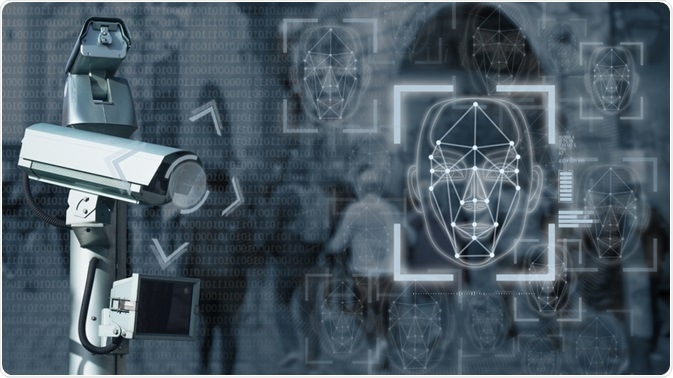Over the last few decades, advances in digital technologies have boosted the presence of surveillance systems for the continuous monitoring of areas of interest, and collection of information for later use, assisting with crime prevention and forensic investigation.
Such systems contribute to tackling safety and security issues. Surveillance is in fact “the practice of monitoring, recording, watching and processing the particular conduct of events, locations and persons for the purpose of governing activity”.
Nowadays closed-circuit television (CCTV) is part of everyday life, with cameras installed across public places, such as shopping centers, airports, and train stations, as well as in private settings (i.e. home security).
CCTV surveillance cameras are considered valuable tools in crime prevention and have been shown to reduce the impact of robberies and car thefts in public areas, albeit they seem to be less efficient in preventing crimes in residential areas – i.e. burglaries.

Image Credit: Scharfsinn/Shutterstock.com
How can CCTV help forensic investigations?
CCTV can be invaluable in tracking the last movements of a missing person or someone who committed a crime, although the impact of surveillance systems in forensic investigation is less evident due to the lack of researchable to assess their effectiveness in solving crimes.
CCTV may shed light on what happened and who was involved in a crime. The advent of higher resolution cameras, together with digital storage units that allow for recordings to be retained for longer times, can allow investigators to watch an entire incident unfold, providing information about the sequence of events. Surveillance could also be used to corroborate or refute other evidence.
Usually, a forensic expert is required to assess the footage containing information about the presence of individuals, often being asked to provide an expert comparison between the Person of Interest and a suspect.
A study conducted on crimes recorded by the British Transport Police between 2011 and 2015, showed that among 111,608 offenses where CCTV was available, the surveillance system was useful in 64.9% of the investigations, namely 1,223 and 4,120 assaults causing serious and minor injury respectively, 1,365 personal robberies and 2,810 sexual offenses.
Biometric recognition through surveillance
The processing of footage captured by CCTV can contribute to the identification of individuals. Biometric recognition involves the extraction and comparison of distinctive physical and behavioral features between specimens to assess differences and similarities.
It can be a very valuable forensic tool since the traits examined are unique and can distinguish one individual from another, providing important information during an investigation.
Face recognition is the most common approach, where algorithms compare digital images (often acquired by surveillance cameras) and generate a matching score which can serve two purposes: verification and identification.
Verification is the direct comparison of the image of an unknown person with a reference image, and it is now commonly used in different settings, like at airport gates during passport control, or as an unlocking mechanism on mobile phones and laptops.
The system compares the two digital images and assigns a score that reflects the degree of similarity between the two faces. If the score is above a predetermined threshold, the identity is verified and the gates or the device will unlock.
Identification instead compares the image of an unknown person with those in a database of known individuals. In this case, the system searches the database to find the closest matches. A forensic expert manually compares the faces and takes a decision.
This latter approach is a complementary tool that can guide experts in a forensic investigation, although in a court of law it is not as trusted as other identification techniques, namely DNA or fingerprints analysis.
Forensic gait analysis
Video footage acquired by surveillance cameras can assist an investigation by providing insights into specific body characteristics. It is in fact possible to distinguish between different gait patterns, therefore allowing a degree of recognition of people.
Gait is the synchronized oscillation sequence of body segments (i.e. limbs) that form a locomotive pattern. The human body contains minor asymmetry which is expressed during gait via upper trunk movement and lower leg rotation.
Forensic gait analysis is a very valuable process. Although it is not as efficient as other identification techniques, it can generate a list of candidates and exclude unrelated subjects.
In 2004 gait analysis was involved in the investigation of the assassination of the Swedish Minister for Foreign Affairs. Gait was assessed between the accused and a person of interest (obtained from surveillance footage) and contributed to the conviction of the accused.
Not all legal systems around the world have the same admissibility criteria in court. For instance, in Australia, forensic gait analysis can only be presented as similarities and differences by ad hoc experts, rather than be used to provide evidence of identification.
Exploiting the potential of surveillance
Not all types of crimes have increased chances of being solved when CCTV is involved. Nevertheless, surveillance can play an important role and is becoming a more ubiquitous tool to guide investigations.
More work is needed to strengthen the automated comparison systems for generating a list of candidates from either their face or gait analysis and narrowing down suspects more efficiently.
Further research is also needed to improve the analysis of source-level information, particularly the digital processing of footage, and fully understand any type of artifacts and distortion they may present.
Sources:
- Gill, M. & Spriggs, A. (2005). Assessing the impact of CCTV. Home Office Research Study 292.
- Ashby, M. P. J. (2017). The Value of CCTV Surveillance Cameras as an Investigative Tool: An Empirical Analysis. European Journal on Criminal Policy and Research, 23, 441-459. 10.1007/s10610-017-9341-6
- Jacquet, M. & Champod, C. (2020). Automated face recognition in forensic science: Review and perspectives. Forensic Sci Int, 307, 110124. 10.1016/j.forsciint.2019.110124
- Seckiner, D., Mallett, X., Maynard, P., Meuwly, D. & Roux, C. (2019). Forensic gait analysis - Morphometric assessment from surveillance footage. Forensic Sci Int, 296, 57-66. 10.1016/j.forsciint.2019.01.007
Further Reading
Last Updated: Nov 12, 2021